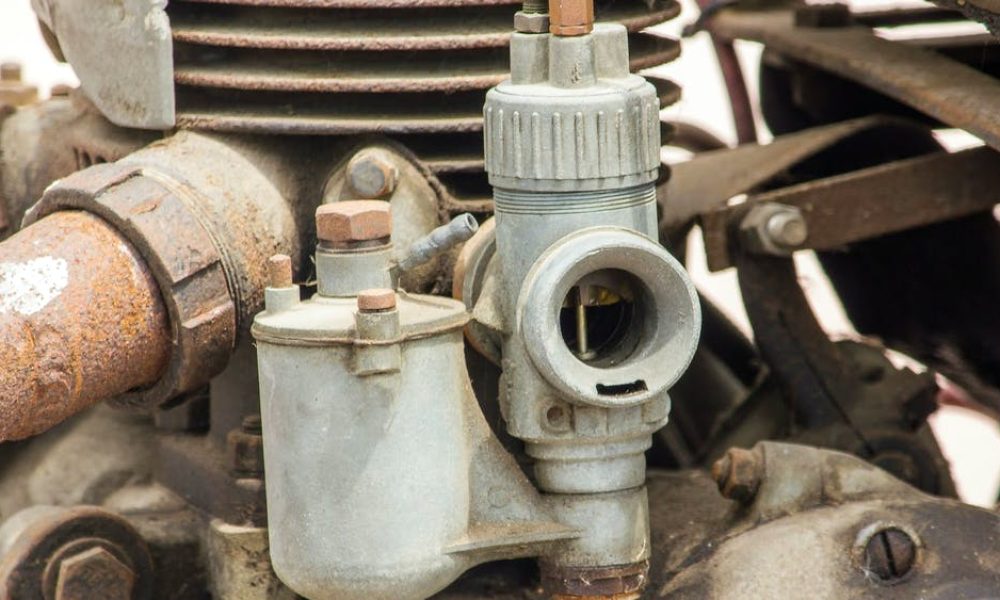Is it worth the trouble, time and money to install fuel injection on your classic car? This is a question a lot of classic car owners are asking these days. With so many options on the market, price, performance, ease of installation, and last but certainly not least, looks. How do you decide?
What Is Fuel Injection And How Does It Work?
Well, first it will probably help if you know how fuel injection actually works. Fuel injection is inherently efficient, it uses real time conditions to meter the optimal amount of fuel to the combustion chamber at exactly the right time.
Some of you may know exactly what that means but for those that don’t, here’s a bit more detail. An Electronic Control Module (ECM) uses data from sensors on the engine, such as engine temperature, throttle position, intake manifold pressure, position of the crank and/ or camshaft/s and an oxygen sensor in the exhaust. The ECM instantly calculates the perfect amount of fuel needed at the perfect time.
A fuel injection system requires much higher fuel pressure, usually 50-60PSI compared to 5-7PSI on a carbureted engine. The system is under constant pressure, the injectors are simply electronically operated valves holding back that pressure. When the ECM sends the signal, the injector opens and the high pressure fuel is sprayed out through the nozzle. Power is controlled by when and how long the injector is open.
So when you “hit the gas” you actually “hit the ECM”. But that doesn’t have quite the same ring, does it?
What Is A Carburetor And How Does It Work?
All of that is high tech. A carburetor is, as they say, a calibrated fuel leak. A carburetor stores fuel in a bowl which is filled by the fuel pump, the level in the bowl is controlled by a float (not unlike a toilet tank). As the throttle is opened, air rushes in, a vacuum is created and fuel is sucked into the engine through a small hole known as a jet. That of course is a very basic description but a carburetor is, at its core, pretty basic.
A carburetor cannot adjust for engine temp or oxygen levels in the exhaust or the density of the air. If you drive a carbureted anything you know that there are days when it is hard to start or doesn’t run quite right. This is why. The conditions are outside what the carburetor is tuned for, this is not only annoying but inefficient. They have to be tuned to run in many conditions so they are most times never tuned as perfectly as possible. If you are into carbs and tuning you can dial in a good carb to perfection but it will only be perfect when the conditions are the same as when it was tuned.
Which Option Is Best For My Classic Car?
Both systems have their benefits and drawbacks. EFI (Electronic Fuel Injection) can give 15-20% better fuel economy and increase power but then it is also complicated and one of the best attributes of old cars is their simplicity. Also Fuel Injection kits are expensive and usually require additional parts that can’t be included due to the variety of vehicle and engine combinations they can fit.
A carburetor is fairly simple to work on but will probably require attention regularly. Also everything about a carbureted system is cheaper, including the carb itself. On more than one occasion I have replaced a carb rather than bother to rebuild it… Which reminds me, I have a couple of carburetors in my shop that need to be rebuilt.
So if you decide you want fuel injection, then it’s time to decide which kit is best for your build and whether or not you want to tackle the job yourself.
I have installed a few of these kits over the years and they are not for the average tinkerer. If you don’t follow the directions to the letter you will have problems. One of the most frequent issues I have heard people complain of is electrical interference that causes computer errors, which is not an issue you’re supposed to deal with on an old car. In some cases, these errors will keep your car from running. So careful attention should be paid to any warnings in the directions about wire harness routing.
The installation will require 50-60PSI fuel pressure, as I mentioned earlier. To accomplish that you will need the correct fuel pump. There are external pumps you can use but an in-tank pump is going to be the most reliable. An in-tank pump, however, will require either a new fuel tank or modifying your existing tank. Most systems also require a return fuel line which helps regulate pressure by sending unused fuel back to the tank. An oxygen sensor is required so the ECM can monitor the actual fuel burn and adjust accordingly, too much or too little oxygen indicates too little or too much fuel.
You will have to install an O2 Sensor bung in the exhaust, most kits include a clamp on style bung, but really the best way is a weld in style. Clamps come loose over time and outside air can be pulled in and throw off the sensor readings.
After that a lot depends on the type of kit you buy. The most common type is a retrofit throttle body injection kit such as the Holley Sniper 550-511 EFI 4150 which looks similar to a carburetor and bolts on the intake like a carburetor. A lot of people prefer this style because it looks somewhat traditional (you can even use your original air filter in most cases) and it is less expensive. The other type is multi-port injection, like the Edelbrock 35883 Pro-Flo 4 XT which replaces the entire intake manifold with a modern intake manifold. Multi-port has an injector for each cylinder whereas throttle body has a smaller number of injectors (usually 2-4) at the throttle body. Multi-port is the most efficient but requires more parts and more complex software and in some cases may require a different ignition system that works with it, therefore these kits are more expensive.
There are so many options on the market today, so it is important to do your research, and in my experience you get what you pay for. If it’s a lot cheaper than other kits, there is always a reason. Make sure you read reviews and look for common issues. Most performance outlets have tech help so you can ask questions before and after your purchase. Summit Racing has a handy tool on their website where you can submit a question about an item and get answers from their tech team and other customers who have used the parts. I have found that to be very helpful. And of course, you can always head over to our very own Car Talk Community and ask a question there.
Is Installing Fuel Injection In My Classic Car Worth It?
So is it really worth it? It’s a lot of work and a lot of money. Most of the initial tuning will be done via computer. Most classic car people would rather use a screwdriver and their ears. After the initial tuning is complete it will tune itself while you drive it, not having control of the tune is not generally appealing to some people either.
However, if you get it installed correctly and swallow the new technology pill, on the other side you will have a car that runs better with more power AND better fuel economy. More power is always appealing to car people and fuel economy is always a good thing. So are the traditionalists wrong? Should they trash their carburetors and get with the times? If the car is being used as a daily driver, it’s probably a good idea. Easier starting, less warm up time and fewer fuel stops are all good things in a daily driver.
But if your classic car is an occasional weekend driver for short cruises and car shows, $1,000 to $3,000 in parts alone is probably too much to spend.
For information on the best way to ship your classic car, check out our Best Classic Car Shipping Companies article.
For more information on the cheapest insurance for your classic car, you can read our Best Cheap Classic Car Insurance article here.






